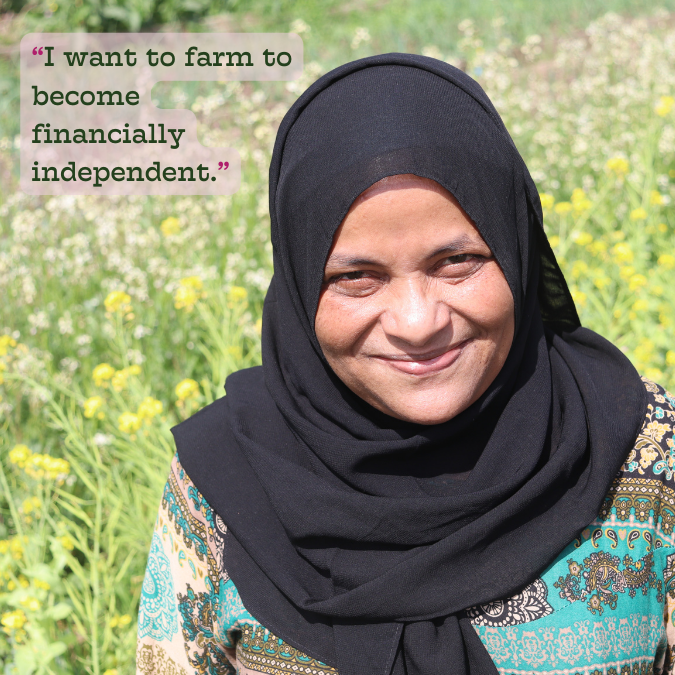Eggplant
Season: Spring/Summer
Storage: Eggplant does best uncovered and left in a cool spot in your kitchen for up to 3 days. Keep it away from ethylene producing fruits like bananas and apples to extend its shelf life.
Other Names: Aubergine (Britian), brinjal (Indian), & beringela (Portuguese)
Fun Facts: As a member of the genus Solanum, it is related to the tomato and the potato. Eggplant (sometimes called “aubergine” ) originated in India but has found its way into a vast variety of cuisines. It is the main attraction in eggplant parmesan (Italian), moussaka (Greek), and babaganoush (Middle Eastern). Try this versatile veggie sauteed, smoked, grilled, or fried. Check out this awesome video by Seed to Life on the history and medicinal benefits of eggplants, click HERE!
This crop is one of the most versatile vegetables known to man! Each eggplant variety has its own taste, physical appearance, and benefit! PIF cultivates many varieties of this vegetable. These include, but are not limited to, the Japanese eggplant, the Italian eggplant, the Chinese eggplant, the Thai eggplant, and the African eggplant. Although, it is not a popular dish or regularly cooked in Texas, PIF plans to generate hype to encourage the community to try new recipes. This needed hype inspired this year’s PIF Eggplant Extravaganza! The recipes below were crafted by local Houston chefs to show off this bountiful summer veg! We hope that this page inspires YOU to begin your own eggplant journey!
Get local eggplant by joining our Farm Share or shopping at farmer’s markets, then share your favorite preparations through our Facebook page.
Chinese-Style Steamed Eggplant
Recipe from Nick Wong

“I normally don’t work with eggplants a lot, but since moving to Houston it’s been one of the summer crops I look forward to every year. They grow so well in this climate and the varieties available during the season are awesome to see.
Steaming is a traditional Chinese technique that I haven’t seen used much in Texas when it comes to eggplants. This is a great alternative way to prepare eggplant if you don’t have access to a grill, or if you have a small apartment kitchen and don’t want to heat up an oven. It’s a great dish to eat along with plain white rice – the tanginess and sweetness of the marinade along with the temperature contrast really make the eggplant pop.”
Ingredients
Instructions
Note: Steaming is a traditional Chinese technique that I haven’t seen used much in Texas when it comes to eggplants. This is a great alternative way to prepare eggplant if you don’t have access to a grill, or if you have a small apartment kitchen and don’t want to heat up an oven. It’s a great dish to eat along with plain white rice – the tanginess and sweetness of the marinade along with the temperature contrast really make the eggplant pop.
Charred Eggplant Salad
Recipe from Evelyn Garcia owner and chef of KIN HTX

“Eggplant is one of my most favorite vegetables. I love using it not only as a whole, but also incorporating it into sauces. It takes on other flavors very easily. It’s so versatile and tasty!
Ingredients
Instructions
NOTE: This salad takes inspiration from traditional Thai style dishes that sometimes include different vegetables or in some instances proteins as well. I love how this recipe can easily be translated to different vegetables as the seasons change.
Babaganoush
A recipe by Rafael Nasr owner of Craft Pita

“Eggplants are an essential part of Lebanese cuisine. You can find them pickled, grilled, fried, stuffed, or roasted and turned into babagnaoush. They are pillar of the summer season all over the Levant. I grew up watching my dad just eating baked eggplant with olive oil and salt as a snack. Eggplants love the sun, so they are best harvested in summer. The thick skin they use to protect themselves also makes a great vessel for being stuffed with hasweh and thrown in a stew.
Ingredients
Instructions
NOTE: (x12 Servings) Babaganoush is a dish that represents Lebanon at an international level. It does because it highlights the most important ingredients in our cuisine. Olive oil, garlic, lemon juice, and tahini.
Chinese Rice Dumpling (Zong Zi 糉⼦) Tradition

“Synergy! Food is medicine! Incorporate an Old Chinese legendary and traditional, cultural way of cooking with baby Indian eggplants from PIF, with beyond beef, lotus seeds, ginkgo, and fermented tofu for added medicinal value.”
Ingredients
Instructions
NOTE: Makes 5 dumplings
More information on the recipe:
History:
Chunqui Period ( 700 to 476 BCE)
According to old religious cultural records, wrapping rice and other ingredients in leaves of
reed and bamboo, then forming a pyramid shape has been regarded as an oblation for their
ancestors during any memorial rituals.
Warring States Period ( 475 to 221 BCE)
Zong zi (Joong in Cantonese) became an essential festival food in Chinese culture, commemorating the death of Qu Yuan (mandarin, Wat jyun in Cantonese). Qu Yuan, a famous poet, belonged to the Chu (one of the feudal lords) royal house of the Zhou Dynasty. He was an important advisor to his lord, but Lord Chu decided to ally with the aggressive and brutal Lord Qin against their Emperor Zhou. Qu was accused of treason and sent to exile. After 28 years of being exiled, he expanded his horizon by writing poems and songs. However, he became very depressed when he witnessed the capital of Chu captured by Lord Qin, whom then became the First Emperor of China.
Qu Yuan refused to surrender to Qin, and committed suicide by drowning himself in the Miluo River. It was recorded that the local fishermen and his political and poetry supporters raced out in their boats to save him or at least find his dead body. This marked the beginning of Dragon
Boat Races. After few searches, they could not find his body. The locals commemorated his death by dropping Zong Z into the river – in their mind, they hoped the fish would eat the dumplings instead of his body.
Jin Dynasty (226 to 420AD)
After more than 500 years of memorializing Qu Yuan silently in the Chu region, Zong Zi spread through the country as a national festival, with dragon boats and dumplings a key part of the ceremonies. In the history of Jin, YIzhiren (益智仁 Chinese Black cardamom ) was also added to the
ingredient. It increased the value of eating Zong Zi. Every region of China has their own version of these tasty leave-wrapped dumplings.
Zong Zi Varieties :
Northern Region: Sweet flavors, filled with sweet been paste, nuts, jujube
Southern Region: marinated pork belly, cured meat, salted duck eggs
Shanghai and Guangdong: Alkaline dumplings, served with sugar
Medicinal values of Ingredients:
Bamboo leaves: Asian traditional medicine for hypertension, arteriosclerosis, cardiovascular diseases.
Ginkgo biloba: Antioxidant, treatment for inflammation, circulation and heart health. Usage for treatment of dementia, Alzheimer’s , depression and anxiety.
Lotus Seeds: In traditional Chinese medicinal practice, lotus seeds are a yin food . It dispels excess heat from the heart and spontaneous bleeding episodes due to heat. Seeds are classified as “sweet flavor” food. It’s alkaloid compounds neutralize toxic from the food and nourish the body.
Lotus plumule has been used by TCM for sleep problems and seminal and vaginal discharge.
Eggplants: antioxidants, vitamins A & C, high in polyphenois which is great to support processing body sugar and prevent insulin resistant issue.
Mushrooms and fungi: antioxidants { selenium for boosting immune system}. High in fiber.
Salted duck egg, : protein, contain selenium for our immune system.
© Té House of Tea June 28, 2022
Roselle and Eggplant

A recipe by Christine Kengue, PIF Farmer
Ingredients
Instructions
Note: This dish is traditionally served as an accompaniment to fried fish but can also be dished over rice or mashed plantains. It also tastes even better the next day!
Grilled Eggplant with Prik Khing Curry
Recipe from thekitchn
Ingredients
Instructions
Note: Leftovers can be refrigerated in an airtight container up to 4 days.
Eggplant, Tomato, and Onion Gratin
Recipe from Chez Panisse Vegetables by Alice Waters
Ingredients
Instructions
Serves 6 to 8.
Eggplant Art
Thank you to all who submitted their eggplant art to PIF.
This July Plant It Forward will be spotlighting one of our bountiful summer vegetables, the eggplant! The eggplant is one of the most diverse and wildly used vegetables around the world. We would like your artwork to reflect the diversity and culture it represents.
Theme: Global Eggplant (think cuisine, culture, cultivation, and journey)

By Penelope Lewis
“This art was created to show how the eggplant is prepared in a variety of cultures with a list of ingredients listed. It has interactive and educational influences.”

By Mal A.

By Missouri Summers
“Which came first? The chicken or the egg?”

By C. Star

By Linda Gellman


